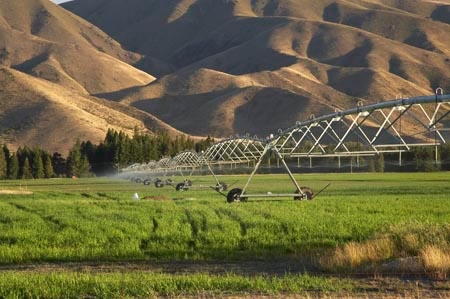
Another major irrigation project has started in South Canterbury with little fanfare or publicity, but when finished will enhance the areas agriculture, and have a positive spin off to all the towns and cities nearby.
Financial studies have quantified the economic return from the nearby Opuha scheme and a similar return is expected from this one. The consents applied to this scheme like Opuha are designed to give a win win scenario to all interested parties from enviromental, recreational and agricultural interests.
The 'harvest and store' philosophy to irrigation allows surplus waters to be captured and used when 'run of the river ' falls below it's sustainable flow. All pastoral farmers operate under such a system, of storing and conserving feed for times when shortages occur.
New Zealand is fortunate to be able to use a very small percentage of surplus water in these rivers,to irrigate dryland pastures and improve the production of agriculture dramatically. With an economy that is overburdened with debt, agriculture needs to produce to its potential, so the country can maintain the standard of living we had in the past.
Construction has begun on the biggest irrigation project in South Canterbury since the development of the Opuha Dam.
When the first sod was turned on Rangitata South Irrigation's new scheme, there was no celebration – no photograph in the paper, speeches or ceremony. That might be a bit harder now that construction has begun, and the scale of the project is becoming more evident by the day reports The Timaru Herald.
The numbers involved are impressive. Taking up to 20 cubic metres of water a day from the south bank of the Rangitata River during high flows, the water will be fed into storage ponds, before being sent down the line to more than 40 properties between the Rangitata and Orari rivers.
It's expected to take about two years to complete the $80 million project, which includes a series of seven ponds covering 280 hectares – which will store 16 million cubic metres of water at a time. Farmers will also have to build storage ponds on-farm – which will add an extra 10 million cubic metres of available storage.
Farmers on the south side of the Rangitata River have been trying for years to get a share of the river's flow, which has instead been directed north via the Rangitata Diversion Race scheme. Morten says the idea itself has probably been around for 50 years, this project alone since about 1998.
He has been chairman of Rangitata South Irrigation since its inception, and there's satisfaction that the consents have finally been granted, and construction begun.
It began as a "run of the river" proposal, but the constraints imposed by the 2006 National Water Conservation Order saw it evolve into a storage proposal. Morten admits when the group first embarked on the project, they probably had little understanding of the degree of resentment proposals to take water from the river would generate.The Water Conservation Order – although stalling the consenting process and restricting what could be done – actually provided the certainty the group needed, by laying down the rules by which they could work.
"So we had to design a scheme that fitted the conservation order and therefore let the recreationalists still do all their things. So we now have a scheme that harvests water at a level which is above the fishing band of water, and it's probably dirty water, flood water, that not many other people want."Morten says there was also a desire to see if there could be a win-win situation; that desire leading to the inclusion of a fish spawning race in the project design.
Much of the land in the command area already has some irrigation. There are 160 water takes, all but six of which are for irrigation. However, there isn't sufficient water to ensure a reliable supply, and the groundwater zones in the area are effectively fully committed. The Rangitata scheme will service 12,000ha, an increase of 7000ha on existing, unreliable, supplies. Reliability is key and the scheme offers around 96 per cent. Morten says the river, on average, reaches flow levels at which the scheme can take water every 35 days. The ponds themselves will hold 35 days' storage, and the on-farm ponds a further 10 days – a total of 45 days' storage.
Farmers subscribing to the scheme will incur considerable cost, with on-farm costs easily totalling around $20 to $30 million. "If they're starting from scratch (with no current irrigation infrastructure) they could be looking at a couple of thousand dollars a hectare. It's a large chunk of money to be spent in the community to put these facilities in."
The payoff, however, is equally substantial. "I've said that for someone who hasn't got irrigation, this could potentially double their output. And someone who has got irrigation, this will make a hell of a difference, with water available in the periods when they need it most, so you can finish your season. Morten says the standard multiplier used for irrigation schemes tends to be 1:4 – every $1 spent on-farm equates to $4 spent off farm.




We welcome your comments below. If you are not already registered, please register to comment.
Remember we welcome robust, respectful and insightful debate. We don't welcome abusive or defamatory comments and will de-register those repeatedly making such comments. Our current comment policy is here.